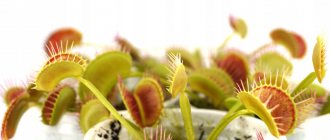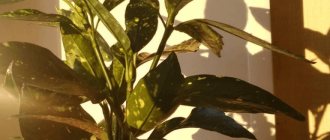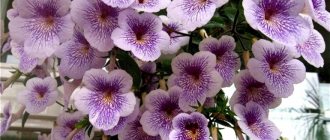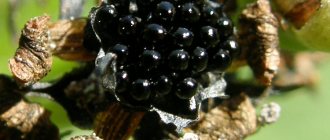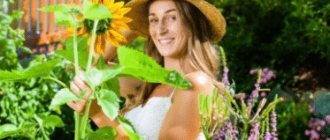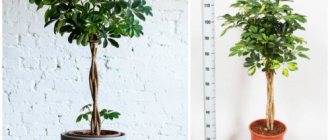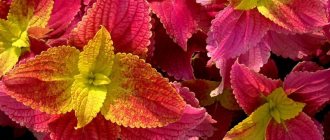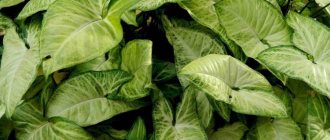Our store offers a wide variety of exotic plants. The Venus flytrap, or Dionaea, is one of the most sought after options, and here's why:
- This is a rather rare plant that can not be found on every windowsill.
- Dionaea is a very striking representative of exotic plants: it hunts with the help of leaf plates that have turned into deadly traps, has an unusual color and feeds on unshelled insects. Watching the hunt is very interesting!
Dionea feels good at home: if you follow a few rules, there will be no problems with care. We will tell you in this article what you can and cannot do with a Venus flytrap.
Lighting
In nature, the Venus flytrap grows in marshy areas on the east coast of the United States of America. Therefore, your task is to recreate these climatic conditions as much as possible.
- When choosing a location, pay attention to the southern window sill. On an eastern or western window, Dionea also feels good: 5 hours of sunlight a day is the minimum required for normal growth and development of the plant. There is no need to protect the flycatcher from the sun, the main thing is that it is not stuffy, like in a bathhouse.
- In the spring and summer, the Venus flytrap begins active hunting. Practice shows that it copes quite well with catching insects on its own.
You need to know this! In autumn and winter, the sun rarely appears, so the flycatcher needs additional lighting. A phytolamp is best suited for this purpose. It is not difficult to understand that a plant does not have enough light: its leaves stretch out and lose their brightness.
Reproduction options
There are several ways to propagate a plant: cuttings, seeds, peduncles and the division method (Figure 8).
Each of them has its own characteristics:
- By cuttings: for propagation you will need a leaf without a trap. It is cut, treated with a root formation stimulator and planted with the lower cut in a container with wet peat or sand. Next, the container must be tightly closed with a lid and placed in a well-lit place. In the future, it is necessary to maintain heat and moisture, and after 2-3 months the first shoots will appear near the leaf, and after the same amount of time the plant will finally take root and can be transplanted to a permanent place.
- By division: the root system of an adult plant forms many baby bulbs over time. They can be used to grow a new flytrap. However, it should be taken into account that the separation of children greatly weakens the maternal culture, so the procedure is recommended to be carried out no more often than once every 2-3 years, for example, during the next transplant.
- Peduncle: a very original but effective method of propagation. The flowering period of Dionaea begins in the spring, and the length of the peduncle can be so long that the plant simply does not have enough strength to open the buds. To prevent your flower from getting sick, cut off the peduncle and place it in damp peat to a depth of 1 cm. Next, you need to provide the sprout with greenhouse conditions and within 2-3 months young shoots will appear in the pot.
Figure 8 The exotic culture is most often propagated by cuttings or peduncles, less often by sowing seeds.
The most difficult way to propagate a Venus flytrap is by seeds. As a rule, it is not practiced at home, since this method involves flowering the crop and collecting seeds. If a Venus flytrap grows in an apartment, it simply may not be able to withstand the intense flowering and die. Therefore, the seed method is usually practiced in specialized nurseries, and at home they are limited to vegetative methods.
Temperature and watering
Dionaea is a heat-loving flower, so it grows and develops well at temperatures from 22 to 30 degrees Celsius. In summer, the flytrap can easily tolerate higher temperatures, but if this regime persists throughout the year, the plant will not live long. In winter, the flower needs rest.
Let's say you have already chosen a place for a pot with a flytrap. It's time to take care of watering it.
- The plant does not absorb mineral salts from the soil and is very demanding on the composition and quality of water.
- Distilled or rainwater, as well as melted snow at room temperature, are suitable for watering the Venus flytrap. Tap water cannot be used. Even after long-term settling, it remains tough, and there are many questions about its composition.
- The plant needs bottom watering, but to avoid charring of the soil, you can occasionally add a little water from above. Fill the pan with water, and the flytrap flower itself will take the amount of moisture it needs. The soil in the pot should not dry out!
In winter, the plant needs to be sent for the winter!
Watering Venus Flytrap, Dionaea
Watering the plant is carried out only in the tray (through the bottom). Water for irrigation should only be distilled (H20), or reverse osmosis (super purified without mineralization).
Water from the tap, boiled, frozen, from a regular filter, cooler, etc. cannot be used under any circumstances - the plant will die because of this.
Distilled water can be purchased on tap at pharmacies that prepare their own medications. This water can also be found in chemical and medical laboratories. Distilled water is sold in car dealerships and gas stations, but keep in mind that the quality of their water is somewhat worse than pharmacy water, so if possible, try to use pharmacy water.
The Venus Flytrap is a swamp plant and does not tolerate dry soil. Don’t be afraid to overwater the plant—it will happily survive it. Be careful not to dry out the plant; it will not tolerate drought.
For watering, you need to use high trays that hold a large amount of water. In summer, watering should be intensive. The water level in the pan can reach two-thirds of the height of the pot (ground level in the flowerpot). In the cool season - autumn and spring, watering should be reduced slightly and the tray should be filled to one third of the pot. As the water level drops, top up again. In winter, during the dormant period, moderate watering as the earth's coma dries out.
Sometimes you can sprinkle Dionea leaves on top from a spray bottle with distilled water, just a little, so that this is not considered watering from above. In summer it is allowed once a day, in the cool season - once every 5 days, but this is not a mandatory procedure at all.
Soil for the Venus Flytrap, Dionaea
The substrate should be prepared on the basis of acidic high peat with an acidity of 3.0-4.0 pH. Before preparing the substrate, perlite must be soaked in distilled water for one and a half to two weeks, draining and replacing the water 3-4 times a week. The substrate is prepared in a ratio of 2:1 or 1:1 (acidic peat: perlite). Perlite allows water and air to pass through very well and also prevents mold from growing. If you do not have the opportunity to prepare such a substrate yourself, you can purchase it from us. You can also add dry sphagnum to the substrate. Sphagnum will help the substrate retain moisture longer and prevent drying out, and it also acts as an antiseptic, disinfecting the soil.
Flowerpot for Venus Flytrap, Dionaea
To grow Dionaea, you need to use only a plastic pot or glass flowerpot with holes in the bottom so that water can circulate easily. Planting plants in ceramic or clay pots is prohibited. The basis of the substrate for Dionea is high acidic peat. When ceramics interact with such peat, they release harmful salts that have a very detrimental effect on the plant. Therefore, use only plastic or glass pots. The diameter of the plastic pot is 8-9-10-12 cm. Very large pots are not needed, since the root of Dionaea muscipula is not large. The plant only drinks from its roots; it receives all its nutrition through the leaves. The diameter of a glass flowerpot for a florarium is limited only by the size of the plant and your imagination.
Illumination of Venus Flytrap, Dionaea
Dionaea muscipula loves sunlight very much. Therefore, the flower pot should be placed on the south window, south balcony, on the south side of the house. In the summer, when the sun becomes very intense, you can make dissected lighting for the plant, that is, use mesh material so that the sun's rays are dissected. To do this, you can use light shading nets, gauze, mosquito nets and the like, otherwise, out of habit, the plant may get burned, but it will gradually adapt to the sun’s rays, become strong, and in the second half of summer these nets should be removed. With a lack of light, the leaves of Dionea may stretch excessively, and ultimately the flycatcher may stop growing firecrackers, become exhausted and die. Dissected sunlight is acceptable, but not shading. At a minimum, the plant should receive 4-5 hours of direct sunlight per day and the rest of the daylight hours should be diffused bright light. But the more time the plant stands in direct sunlight, the better.
If it is not possible to grow a plant on the south side, then you can supplement it with very bright lamps, daylight or flora, with a power of at least 3500 lumens - full daylight - 12-16 hours with a lamp, 8 hours - at night, without a lamp. You can find high-quality lamps for the Venus Flytrap HERE.
Carnivorous plants do not really like being rotated around an axis, so it is advisable to make some kind of mark on the pot regarding the cardinal direction and try to always adhere to this direction.
Feeding the predatory Venus Flytrap, Dionaea
For any carnivorous plants, insects are fertilizers. In order for the Venus Flytrap to live and develop well, it does not need to eat too many insects, only 3-4 insects per year. If you want to feed the plant, then you need to remember that it cannot be overfed, because... it may become oversaturated with fertilizers from the insects it eats. You can only feed it live insects. The insect must move, stimulating the sensors inside the firecracker. Only in this case the plant will produce an enzyme that will extract all the beneficial substances from the insect. Under no circumstances should you feed it with meat, cottage cheese, etc., as this will kill the plant. You need to feed the Venus flytrap no more than once every 3-4 weeks - just one insect per cracker! If the plant caught the insect on its own, violating the feeding schedule, then there is no need to select the prey. Prey is usually digested from 2 days to a month, depending on the size and density of the insect. The plant from the insect sucks out the necessary nutrients, and the chitin remains. After the plant has extracted everything useful from the prey, the cracker opens and only a cracker from the insect remains in it. If the insect is very large and did not completely fit into the firecracker, or the air temperature was very high at the time of eating, then this firecracker may darken, but there is no need to worry, the plant will still have time to receive nutrition and will grow many new firecrackers.
Humidity and air temperature for Venus Flytrap, Dionaea
Humidity is 45-70%, as for most indoor plants. Home conditions are acceptable. Air temperature in summer is 25-35 °C, in winter +2…+7 °C. Needs a period of rest (wintering).
Wintering of the Venus Flytrap, Dionaea
Dionaea muscipula requires wintering (rest period). Dionea is a plant of a temperate climate, so the change of seasons is inherent in it by nature. Without this dormant period, the plant will be weak and may die. It is best for wintering to take place on the shortest sunny days (late autumn-winter). You can also navigate by the weather - with the arrival of cold weather, you can prepare for the winter. Until this moment, all these plants can live wonderfully outdoors all season long (on the street, in the yard, on the balcony, on the window). When the temperature drops to +7…+5, it’s time to winter. Usually this is November. We treat the plant with a fungicide to prevent mold from forming—Fundazol works very well. To do this, just spray the plant and soil intensively with a spray bottle. A pot with a plant without a tray can be packed in a plastic bag, zip bag or plastic container; small holes must be left or made to allow some oxygen to flow in. About once every 2 weeks you need to check the soil moisture and the absence of mold. The substrate in the pot should be slightly moist. Do not dry out under any circumstances. If there is not enough moisture, add a little water from above under the root. For wintering, plants can be placed in a cellar, basement, on a glazed balcony, etc. The main condition for wintering is a low temperature ranging from +2 to +7 degrees. Higher temperatures are not suitable, since at high temperatures the plant’s vegetation does not slow down and it does not fully rest. The refrigerator is usually a stable +5, so this is the ideal temperature. Dionea does not need lighting at all during the wintering period, provided that the temperature is below +7 °C. During the dormant period, Dionea may lose all its opened leaves - this is not scary. The most important thing for a plant is the health of the rhizome (bulb). As soon as it gets into the warmth and good lighting, it will begin to bloom new firecrackers.
The wintering period for a baby is 1.5-4 months, for a teenager - 2.5-4 months, an adult plant overwinters for 3-4 months. Exit from wintering - as soon as the plant has spent the required period at rest, we take them out into a warm place, put them in a tray with water in a bright light and continue to care as usual.
Replanting Venus Flytrap, Dionaea
The carnivorous plant must be replanted once a year. It is most convenient to do this immediately after a period of rest. Replanting is necessary in order to renew the soil with the necessary acidity, since over time the soil deoxidizes. If over the past year the plant has produced babies, then you can plant them in separate pots.
Blooming Venus Flytrap, Dionaea
Weight
noah adult Venus Flytrap blooms. In the first year of flowering, it is necessary to cut off the peduncle(s) when it just begins to grow. The first flowering takes too much strength from the young plant, and it may die. Let the plant become as strong as possible, grow a larger rhizome, and next year flowering will not be so debilitating for Dionea. Next year you can leave the peduncle, but then your plant will not be very large, since flowering and seed formation takes a lot of energy from it. If the peduncle is cut off, the plant will be powerful with large leaves -
firecrackers.
Changing leaf of the Venus Flytrap, Dionaea
Dionea has a constant change of leaves. The old leaves at the bottom die off and new ones grow from the center. Leaves that have exhausted their cotton reserve also die off. Each firecracker leaf fires 4-7 times, after which it dies. Therefore, there is no need to force the plant to clap firecrackers for fun. When the leaves die they turn black and dry out. It is not necessary to cut them off, but you can do this to make the plant look more aesthetically pleasing. It is useful to know that you cannot pull out blackened leaves, because... the leaf may come off with part of the rhizome, thus it will be damaged and will not bear children. Blackened leaves must be cut off, leaving 0.5 cm from the beginning of growth.
The color of a healthy leaf of Dionaea muscipula can range from completely green to the redness of the “mouth” of the firecracker. This depends on the time of year, lighting, substrate composition and temperature conditions, in some cases on the Dionea variety. The temperature regime in this case is the fluctuations in day and night temperatures. The greater the temperature changes, the greater the likelihood of redness of the inside of the firecracker.
Diseases of Venus Flytrap, Dionaea
Dionaea is constantly in a humid environment, so it is susceptible to various types of rot and fungi.
Products for treating Venus Flytrap, Dionaea against parasites and diseases:
— Fitosporin M paste is a biofungicide for protecting plants from fungal and bacterial diseases.
— Fundazol is a fungicide and disinfectant with a broad spectrum of action against a large number of fungal diseases.
— Aktara is an insecticide with enteric contact action. Very effective against small insects that have settled in the substrate.
If you grow Venus Flytrap (Dionaea muscipula) in accordance with the above conditions, you will have strong, healthy plants that will delight you for many years. With proper care, Dionaea muscipula lives 20-30 years and during this time reproduces many times.
How to choose soil and pot?
Choosing a pot is a matter of taste, but this plant looks most solemn in a white background. It is often chosen when a flower is bought not for oneself, but as a gift.
The beauty and health of the plant depends on the soil. Due to its inability to absorb minerals, the flycatcher prefers poor soils. This can be a mixture of peat and quartz sand (an alternative is perlite soaked in distilled water). In order not to buy components separately and not experiment with the proportions indicated on the Internet, we recommend purchasing ready-made soil for dionaea (it is always on sale).
It is important! When choosing a pot, focus on the size of the plant. The container should not be too wide! As for color, light shades heat up less in the sun, which avoids overheating of the root system. A proper pot must have drainage holes and a tray into which water is poured.
Types and varieties
The Venus flytrap is the only representative of its genus. However, there are many varieties of Dionaea. They differ in color, size and number of traps.
- Dantate Trap. The diameter of the plant reaches 12 cm. The number of traps varies from 5 to 12. The flowers are green in color with a red stripe on the outside.
- Giant. The variety is distinguished by large, quickly forming traps measuring more than 5 cm. The rosette of leaves is green in color, and the traps are deep burgundy in the light.
- Akai Riu. The leaves and flowers of this Dionaea have a dark red color, regardless of the degree of illumination of the plant. The traps have a green stripe on the outside.
- Regyula. Plants of this variety have green and purple colored traps. The leaves have a rich green color.
- Bohemian Garnet is distinguished by a lush rosette with wide leaves growing horizontally. The number of traps can reach 12.
- Funnel Trap. Dionaea changes the color of its traps from green to red as it matures.
- Crokedile. In young plants the traps are pale pink, in adults they are deep red. Leaves grow horizontally.
- Triton. This Dionaea is distinguished by unusual elongated traps, with an opening on only one side. The teeth of the traps often stick together.
- Dracula. In this variety, the traps are painted red only on the inside. The teeth of the traps are short, reminiscent in shape of the jaws of vampires, which is why the variety got its name.
Planting and replanting Dionaea: considering the most popular options
The choice of variety depends on personal preference, but the most popular options are the typical shape, large mouth, and red dragon. Before placing an order, it is important to understand what exactly you need:
- Seeds. Option for advanced gardeners. It takes up to three years to grow Dionaea. Of course, a flytrap grown from seed is a clear expression of the work, skill and patience put in, but if you lack experience, we recommend starting with other options. An interesting fact is that the little Venus flytrap will most likely not look like its parents - this is a feature of this breeding method. If you decide to get seeds at home, you need to consider two points: the plant begins to bloom at the age of 2-3 years and does not belong to the category of self-pollinating. This “work” will have to be undertaken, as well as growing seeds in a container, replanting, and carefully caring for the Venus flytrap during the rooting period.
- Seedling. These are small flytraps placed in a temporary pot. After receiving the parcel, the plant must be replanted within 1-2 weeks. Accordingly, it is better to prepare the soil and container in advance.
- Plant in the pot. The older the flower, the more magnificent and larger it is. If you are purchasing a flytrap as a gift, pay attention to the plants planted in a pot with automatic watering.
Diseases and pests
Pests
Despite the fact that the Venus flytrap is an insectivorous plant, it can also suffer from various pests. For example, aphids may inhabit the traps, causing them to become deformed. To get rid of such a harmful insect, you can treat the flower with an insecticidal preparation (in the form of an aerosol).
If the room has excessively dry air, then spider mites may settle on the bush. To exterminate them, you will need to spray the bush with a solution of an acaricidal drug. One treatment will not be enough, so the plant is sprayed 2 or 3 times with a break of 7 days.
Diseases
When water stagnates in the substrate and air humidity levels are excessively high, sooty fungus forms on the bush. To get rid of it, fungicidal agents are used. Also, if a flower is placed in unsuitable conditions, gray rot or botrytis may develop on it. As a result, gray fluff appears on the surface of the bush. As soon as the first signs of such a disease are noticed, you need to cut off all the affected parts of the bush as soon as possible, and then it is sprayed with a solution of a fungicidal drug.
Bactericidal damage is very dangerous for such a plant. It develops when the Venus flytrap is unable to digest the victim it has caught. Because of this, the insect trap rots, turns black, and then the disease rapidly spreads throughout the bush. In this case, cut off the problematic trap as soon as possible and spray the bush with a fungicidal solution.
What do we do for you?
Your right is to choose any option from those offered; our task is to provide you with a quality product. The germination rate of seeds of carnivorous plants is about 70%. In practice, this means that 7 out of 10 potential plants will sprout. The second direction of our activity is growing Venus flytraps specifically for sale. We understand that our customers are located in different parts of Russia, and therefore we pay special attention to packaging and transportation conditions. To prevent plants from freezing in transit, we ship them between April and November, but this is not the only reason for choosing this interval. Many plants go into hibernation in winter. Flowers cannot be replanted during this period. In spring and summer, we recommend using the following algorithm:
- Carefully remove the flower from the shipping container.
- Clear the roots from the soil.
- Prepare a container at least 20 cm deep and place a layer of substrate on the bottom.
- Place the plant in the middle of the pot and fill it with the remaining soil.
To make the soil breathe better, there is no need to compact it. Don't forget to check if there are drainage holes at the bottom of the pot.
Transfer
It is recommended to replant the Venus flytrap once every 3-4 years - when the old soil mixture has lost all its “strength”.
Each time you can use the same pot, because the flytrap does not grow much - although it has many young shoots, the old ones manage to die off at this time.
The main thing is the right substrate! It consists of: 2 parts perlite, 4 parts peat, 1 part sand. All components should first be washed and dried.
Transplant plan:
- Carefully remove the dionaea from the pot, holding it by the base. For convenience, you can first soften the soil with water - it will become easier to remove the root system from the ground.
- Also carefully wash off the remaining soil from the roots.
- Fill the empty pot with a small amount of prepared soil. A drainage layer is not needed here. But a pot with holes in the bottom and a tray is a must!
- Place all the roots in the pot and sprinkle with soil on all sides, leaving a couple of centimeters until completely filled.
- Place sphagnum moss closely on top - they look nice and perform a moisturizing function.
- Place the transplanted flower in a more shaded place, but don’t forget about watering.
- After 5-7 days of “getting used to” the new place, Dionea can again enjoy the sun.
About flowering and food
The flycatcher releases a flower stalk. The flowers themselves are small, star-shaped and smell pleasant, luring insects into the trap.
- Flowering can last two months, but you need to understand that prolonged flowering depletes the flower.
- If you are not interested in growing a Venus flytrap from seeds, it is better to cut off the peduncle, which prevents the plant from developing and forming large traps.
Interesting fact Most plants require fertilizers during flowering and active growth. Here the situation is completely different: since the root system is not capable of receiving minerals from the soil, it synthesizes them on its own, but it will not be possible to solve the problem of nitrogen deficiency in this way.
The only source of nitrogen is shellless insects that fall into its trap. If you take the pot out onto the balcony in the spring and summer, the plant will cope with this task on its own, but you should not feed the flower with dead flies (if necessary, then only live ones). Also, the flycatcher will not refuse mosquitoes and spiders.
- Do not feed your flycatcher beetles, worms, hard-shelled insects, or human food (sausage, meat, and other foods).
- Avoid feeding during the adaptation period, in winter or if the plant is sick. Digestion of an insect is an energy-consuming process.
Failure to follow these recommendations leads to the death of the trap due to the inability to properly digest food. The ideal “lunch” of a flower that eats flies takes up no more than 1/3 of the trap area!
Feeding process
Under natural conditions, the feeding process of Dionaea occurs as follows: the plant opens its traps and begins to secrete a special nectar that attracts insects. When a fly or spider touches the sensitive projections located along the edge of the leaf, the trap slams shut and the victim remains inside. After this, the Venus flytrap begins to secrete a special secretion that helps digest the prey (Figure 6).
Note: In a city apartment, a predator cannot always obtain food on its own. Therefore, its owner will have to feed it with insects himself.
It should be immediately clarified that you cannot feed the flycatcher with just anything:
- She should not be given earthworms or beetles in a dense chitinous shell. Dionaea simply will not be able to digest them.
- The Venus flytrap should not be fed with chewing insects, as they may damage the trap leaf.
- No matter how strong the temptation, do not feed the flycatcher regular meat or sausage. From such products it will simply begin to rot.
- It is important not to overfeed Dionea: during the entire growing season, she will only need a few live flies, spiders or large mosquitoes.
Figure 6. You can feed the predator only certain insects.
It is also necessary to choose the right time for feeding. You should not give food to a predator if it has recently suffered an illness or is weakened in general, has undergone a transplant or other stress, or has been in conditions of high humidity or poor lighting for a long time.
Is it possible to revive a flycatcher?
The answer to this question depends on two factors: the degree of damage to the plant and the speed of your reaction. If the rhizome is painted white, the flycatcher can be saved. To do this, you need to carefully remove the blackened parts of the plant and replant it in a new pot with suitable soil. During the rehabilitation period, the flycatcher especially urgently needs sunlight, so having a lamp aimed at Dionaea 12 hours a day is a necessary condition.
The flycatcher rarely gets sick, but if two factors coincide - waterlogging of the soil and low temperature - a fungus may appear on the roots, and gray rot may appear on the stem and leaves. This “infection” is treated with fungicides, which can be purchased at any store that sells indoor plants. If the problem is identified early, the chances of recovery are high. But yellowing of the leaves indicates that you are watering the flytrap with inappropriate water, such as tap water, or you have flooded the flower. Here it is important to realize the mistake in time and change hard water to distillate or normalize the watering regime.
You should also warn about some more nuances for growing Dionaea:
- Even with the most favorable care, the leaves and traps of Dionaea die - the lower rows. So don't be scared, just cut them off with a sharp blade and treat them with crushed coal.
- If you are not going to get seeds, it is better to cut off the emerging shoot with a flower! Flowering takes a lot of energy from the plant, and it is not decorative.
- The flytrap does not cause an allergic reaction and is safe for animals. But curious cats can sniff the plant, thereby touching the traps with their fur and whiskers, which can cause them to slam shut uselessly.
Our store gladly offers to buy Dionaea (Venus flytrap) in Tula. The plant will be well packaged. But immediately after purchasing, you will need to acquire everything you need for good care.
FAQ
The Venus flytrap is a beautiful and unusual predator, so it is often purchased as a gift. We are asked many questions before making a purchasing decision. Here are the most common ones:
Is the Venus flytrap dangerous for humans?
The Venus flytrap is completely safe for both humans and pets. Her only interest is small insects: spiders, mosquitoes, flies and midges. If a child touches the trap, nothing will happen to his finger: the leaves of the plant are soft, and the “juice” does not begin to be produced immediately. Just think, it can take up to 10 days to digest one insect.
On the other hand, frequent “games” with a flycatcher can lead to its death. Each closing of the trap is accompanied by a large expenditure of energy. If you “deceive” the flytrap infrequently, nothing bad will happen - in a day or two it will open again, but such manipulations on an ongoing basis can destroy the plant. If you want to observe a “living organism,” catch a fly and try to feed the flytrap, but the insect must be alive.
Are carnivorous plants difficult to care for?
The order comes with a detailed guide on how to care for a Venus flytrap at home, so in most cases there will be no problems. All the flycatcher needs is soft water and good (natural or artificial) lighting. The flycatcher, as a rule, does an excellent job of catching insects on its own.
How long does a flycatcher live?
The Venus flytrap is a perennial plant that can live for decades with proper care.
We will be glad if, after reading this article, you decide to purchase this amazing flower. In our store we have the most common and unpretentious plants, as well as everything you need to grow flycatchers at home - special soil, seeds, pots.
We deliver all plants presented on the website throughout Russia. Residents of Moscow and the Moscow region can arrange courier delivery, as well as pick up a flower from our showroom. Goods are sent to other regions by Russian Post, Boxberry and SDEK.
If you are looking for the most beautiful exotic plants, check out the Exotica online store. We guarantee a wide selection and reasonable prices!
Wintering and rest period
Like any other plant, the Venus flytrap has a period of winter dormancy. It begins already in September, so at this time you need to completely stop feeding the flower (Figure 9).
Note: You can determine that Dionaea is entering a dormant period by the state of its leaves. New traps are no longer formed, and old leaves gradually die off.
The dormant period in winter involves not only stopping feeding, but also revising the watering schedule. Yes, the soil should remain moderately moist, but it is better to drain excess water from the pan. It is important to constantly monitor the humidity of the substrate. If it dries out or is too wet, the exotic plant simply may not emerge from its dormant period in the spring.
Figure 9. In winter, the plant enters a period of vegetative dormancy
In addition, it is advisable to move the flytrap to a cooler room or even to the basement, after covering the pot with a bag or a transparent cap. You can also place a covered flower in the bottom compartment of the refrigerator. In February, when the gradual awakening of the culture begins, the container with the predator is moved to its old place, but active growth and development will begin no earlier than the end of May.
Plant information
In America, this species is included in the list of endangered plants. Floristic predator is the only perennial insectivorous herbaceous plant of this species of the Rosyankov family. The plant is not tall; in adulthood it does not grow higher than 15 cm. The stem of the Venus flytrap is bulbous. Small white flowers are collected on tall peduncles in a corymbose peduncle.
The leaves, forming a rosette, grow from a short underground stem from 3 to 7 pieces (depending on age). These insect traps grow back after flowering. Their length is from 6 to 15 cm. The “mouth” is green, but when well illuminated, its inner part turns red. Inside there are glands that are capable of producing odorous nectar to attract insects. Along the edges of the trap there are hairs and triggers; when a victim gets inside, they are irritated and the trap slams shut, and the plant begins to produce digestive secretions.
Digestion lasts several days, then the predator opens the insidious bait leaf again. After several successful hunts (5-7 times) for insects, the leaf can no longer produce digestive secretions in sufficient quantities. It dies off, giving way to a new predator leaf. As stated above, the Venus flytrap prefers open sunny and wet meadows of North Carolina or swamps with peat and sandy soil in South Carolina. Despite the fact that the plant prefers to live in a swamp, it does not tolerate stagnant water.
General information about the plant
Charles Darwin called the Venus flytrap "one of the most remarkable plants in the world" But those who witnessed it snapping a living trap would disagree. The Venus flytrap attracts prey using sweet nectar. By touching the trigger hair twice or two hairs in a row, the insect becomes electrically charged, and the flycatcher's tenacious teeth form a cage.
The insect's continued struggle causes the trap to seal, after which digestive enzymes dissolve the victim's soft tissue. The trap absorbs the insect, and after about a week, it opens again, using the nectar to attract new “visitors”.
The Venus flytrap's reputation as a difficult plant to grow is not worth mentioning. Follow the instructions in this guide and you shouldn't have any problems! To successfully raise flycatchers and understand the challenges associated with keeping them, it is best to start in the species' natural habitat.
Features of winter care
Venus flytrap plant - how and what to feed
Preparation for winter in Dionea begins in the fall. The leaves dry out, turn black and fall off, and the plant itself shrinks. Inexperienced gardeners may mistake this state of the plant for a disease and try to revive it. But for the flycatcher this is a normal state during rest.
During wintering, the pot with the predator plant should be placed in a cool place:
- a window sill where the temperature is below room temperature;
- bottom shelf of the refrigerator;
- cellar.
“Sleep it off” and gain strength during winter is simply a necessity for Dionaea. The plant is left in this state until mid-February. During this period, there is practically no need to care for the plant; it is enough to occasionally check the condition of the substrate - it should be slightly moistened.
The flower begins to awaken slowly at the end of February. And at the end of spring, with the onset of summer, the flycatcher begins to actively grow.
Preparing the plant for winter
